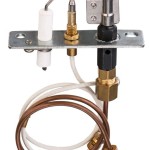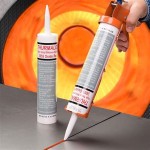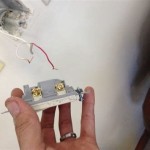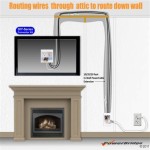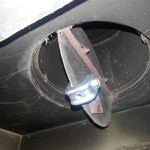Floating Shelves Beside Fireplace: Design, Installation, and Functionality
The incorporation of floating shelves flanking a fireplace offers a compelling blend of aesthetic appeal and practical storage. This design choice allows for a customized presentation of personal items, enhancing the visual character of a living space while efficiently utilizing the often-underutilized areas surrounding the fireplace. Careful consideration of design principles, material selection, and installation techniques is crucial for achieving a balanced and enduring result.
Design Considerations for Floating Shelves Beside a Fireplace
The design phase of implementing floating shelves beside a fireplace necessitates a thorough evaluation of several factors. The architectural style of the room, the dimensions of the fireplace and surrounding walls, and the desired functionality of the shelves all contribute to the overall design process. Symmetry is often a key element, with shelves on either side mirroring each other in size, spacing, and content. However, asymmetrical designs can also be effective, especially in more contemporary or eclectic settings.
The color and material of the floating shelves should complement the existing décor. Matching the shelves to the fireplace mantel or other architectural details can create a cohesive look. Alternatively, contrasting materials can be used to create visual interest and highlight the shelves as a focal point. For instance, dark wood shelves against a light-colored stone fireplace can create a striking contrast. The selection of shelf depth is also critical. Deeper shelves can accommodate larger items but may also protrude excessively into the room, potentially impeding traffic flow. Shallower shelves offer a more streamlined appearance and are suitable for displaying smaller objects.
Adequate space between the shelves is necessary to prevent a cluttered appearance and allow for the display of taller items. Vertical spacing should be determined based on the types of objects intended for display. Books, picture frames, and decorative vases each require different amounts of vertical space. The overall visual weight of the shelves and their contents should be balanced with the fireplace itself. A large, imposing fireplace may require larger, more substantial shelves, while a smaller fireplace may be better suited to more delicate and minimalist shelves.
Consideration must be given to the heat produced by the fireplace. Certain materials, such as solid wood, are more susceptible to warping or discoloration from prolonged exposure to heat. Heat-resistant materials or proper insulation may be required, particularly if the shelves are located close to the fireplace opening. The placement of the shelves should also take into account the safe clearance distances recommended by fireplace manufacturers to prevent fire hazards.
Material Selection for Floating Shelves
The durability, aesthetic appeal, and heat resistance of floating shelves are significantly influenced by the materials chosen. Several options are available, each with its own advantages and disadvantages.
Solid wood shelves offer a classic and timeless look. Hardwoods like oak, maple, and walnut provide excellent strength and durability. Softwoods, such as pine, are more affordable but may be more prone to scratches and dents. Solid wood shelves can be stained or painted to match the surrounding décor. However, solid wood is susceptible to changes in humidity and temperature, which can cause warping or cracking over time. Proper sealing and finishing are essential to protect the wood from moisture and heat.
Engineered wood products, such as plywood and MDF (Medium-Density Fiberboard), offer a more stable and affordable alternative to solid wood. Plywood is composed of multiple layers of wood veneer bonded together, providing good strength and resistance to warping. MDF is made from wood fibers compressed with resin, resulting in a smooth and uniform surface. Engineered wood shelves can be veneered with real wood or finished with laminate or paint. While engineered wood is less susceptible to changes in humidity, it is still important to seal the edges to prevent moisture absorption.
Metal shelves, typically made of steel or aluminum, offer a modern and industrial aesthetic. Metal is inherently strong and heat-resistant making them useful near a fireplace. However, metal shelves may not be suitable for all décor styles. Glass shelves offer a sleek and minimalist look. Tempered glass is strong and durable, but glass shelves may require specialized hardware for installation. Stone shelves, such as granite or marble, offer a luxurious and durable option. Stone is heat-resistant and adds a touch of elegance to any space. However, stone shelves can be heavy and require substantial support.
The selection of appropriate mounting hardware is equally important. Heavy-duty brackets or concealed support systems are essential to ensure that the shelves can safely support the intended load. The type of wall construction (drywall, plaster, brick, or concrete) will dictate the type of anchors required. It is crucial to use anchors that are specifically designed for the wall material and that can withstand the weight of the shelves and their contents. A professional installer can provide guidance on the selection of appropriate hardware and ensure that the shelves are installed securely.
Installation Techniques for Floating Shelves Beside a Fireplace
Proper installation is paramount to the functionality and safety of floating shelves beside a fireplace. The installation process requires careful planning, precise measurements, and the use of appropriate tools. Incorrect installation can result in unstable shelves, damage to the walls, or even safety hazards.
Before beginning the installation, it is essential to locate wall studs. Wall studs provide a solid anchor point for the shelves and help to distribute the weight evenly. A stud finder can be used to locate the studs, or they can be identified by tapping on the wall and listening for a solid sound. Once the studs are located, mark their position on the wall with a pencil. If wall studs are not available in the desired location, appropriate drywall anchors must be used. Different types of drywall anchors are available, each with its own weight capacity. Select anchors that are rated to support the weight of the shelves and their contents, with a significant safety margin.
Accurate measurements are crucial for ensuring that the shelves are level and evenly spaced. Use a level, tape measure, and pencil to mark the desired position of the shelves on the wall. Double-check the measurements to ensure accuracy. Use a drill to create pilot holes at the marked locations. The size of the pilot holes should be slightly smaller than the screws or bolts used to attach the mounting hardware. Attach the mounting hardware to the wall, using screws or bolts that are long enough to penetrate the studs or anchors securely. Ensure that the mounting hardware is level and aligned correctly. Support brackets must be attached securely to the wall. Concealed mounting systems often involve a metal rod or bracket that is inserted into a pre-drilled hole in the shelf. These systems provide a clean and minimalist look, but they can be more challenging to install.
Once the mounting hardware is in place, carefully slide the shelves onto the brackets or rods. Ensure that the shelves are securely seated and that they are level. Make any necessary adjustments to the mounting hardware to ensure that the shelves are perfectly aligned. Secure the shelves to the brackets with screws or bolts, if necessary. Test the stability of the shelves by applying gentle pressure. If the shelves wobble or feel unstable, re-tighten the screws or bolts. Conceal any visible screws or mounting hardware with decorative caps or plugs. Clean the shelves and the surrounding wall area to remove any dust or debris.
Consider the weight limits of the shelves and avoid overloading them with heavy objects. Distribute the weight evenly across the shelves to prevent sagging or tipping. Secure fragile or valuable items to the shelves with museum putty or other adhesive materials to prevent them from falling. Routinely inspect the shelves and mounting hardware for signs of wear or damage. Tighten any loose screws or bolts and replace any damaged components promptly.
The addition of floating shelves beside a fireplace can significantly enhance the aesthetic appeal and functionality of a living space. By carefully considering the design, material selection, and installation techniques, it is possible to create a custom storage solution that complements the existing décor and provides a stylish and practical display area. With proper planning and execution, floating shelves beside a fireplace can become a treasured focal point for years to come.

Fireplace Floating Shelves Design Ideas

Floating Shelves Either Side Of Fireplace Bookcases And Storage Feature Wall Living Room Decor Built In

Fireplace Floating Shelves Design Ideas

Fireplace Floating Shelves Design Ideas
:max_bytes(150000):strip_icc()/311232807_2323060507842894_3898490003930808988_n-c88a352b9f8e4c449d2e3bf9e1063cef.jpg?strip=all)
30 Clever Ideas For Floating Shelves In Any Room

Decorating Floating Shelves Next To Fireplace Tips And Tricks Around Living Room

8 Ways To Frame Your Fireplace With Shelves

Matte Distressed Floating Shelf

Floating Shelves On Both Sides Of The Fireplace Give A Sense Balance And Harmony Living Room Bedroom Decorating

Floating Fireplace Shelves Over Cabinet Transitional Living Room
Related Posts

